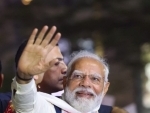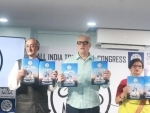
J&K: Dwindling Terror
On December 5, 2014, a group of heavily armed militants had stormed into the Army's 31 Field Regiment Ordinance Camp located at Mohra in the Uri Sector of Baramulla District near the Line of Control (LoC). A gun battle followed, in which one Lieutenant Colonel and seven soldiers of the Army, as well as one Assistant Sub Inspector and two constables of the Jammu and Kashmir (J&K) Police were killed. Six militants were also killed in the operation. Six AK rifles with 55 Magazines, two shotguns, two Night Vision Binoculars, four Radio Sets, 32 Grenades, one Medical Kit and other materials were recovered from the dead terrorists.
Through 2015, the Security Forces (SFs) lost 41 personnel, while eliminating 113 terrorists, yielding a ratio of roughly 1:2.75. This was an improvement over the success achieved in 2014, when SFs had eliminated 110 militants while losing 51 of their men, a ratio of approximately 1:2.15. In 2016 prior to the Pulwama incident (for which final fatalities are still to be ascertained), two SF personnel have lost their lives while 16 militants have been killed in SF operation, yielding a ratio of 1:8, though this is likely to be significantly reduced by the end of the Sempora operation.
Despite proclivities to exaggerated threat perceptions and media over-reaction to the most recent of terrorist outrages, operational successes of the Forces on the ground have culminated in a quantifiable improvement in the security environment in J&K, particularly for the civilian population. Through 2015, the number of civilians killed stood at 20, substantially lower than the 32 civilian fatalities recorded in 2014. The last major attack (involving three of more fatalities) targeting civilians was recorded on December 5, 2014, when militants had exploded a grenade in the Tral town of Pulwama District, near the Bus Stand, killing one person and injuring another 12. One of the injured persons died later the same day, while another succumbed to his injuries on December 12, 2014.
Further, according to the South Asia Terrorism Portal (SATP) database, total militancy-related fatalities in the State declined from 193 in 2014 to 174 in 2015. Thus, the declining trend in fatalities on a year on year basis witnessed since 2001 was once again established after a gap of two years. After a low of 117 in 2012, such fatalities had increased to 181 in 2013 and 193 in 2014, raising concerns over theconsolidation of peace in the State.
A number of other parameters of violence have also registered declines. Though the number of major incidents increased from 20 in 2014 to 24 in 2015, the resultant fatalities declined from 102 to 92. Similarly, while there was an increase in incidents of suicide attacks, from two in 2014 to six in 2015, the resultant fatalities declined from 29 in 2014 to 20 in 2015. More importantly, while militants had killed 19 people (five civilians and 14 SF personnel) in such attacks in 2014, they lost 20 of their cadres while causing seven deaths (four civilians and three SF personnel) in 2015. The number of explosions and resultant fatalities, however, registered increase, from 15 and six respectively in 2014 to 37 and 11 respectively in 2015; it is significant, however, that the escalation in number of explosions was not matched by a proportionate increase in fatalities. Nevertheless, the number of Districts from where fatalities were recorded increased from 13 in 2014 to 14 in 2015. Further, in 2015, only 16 of the State's 22 Districts recorded any kind of subversive activities (incidents like arrests, recovery of arms and ammunition, explosions, etc., apart from killings) as against 18 Districts in 2014.
The improvement in the situation also coincided with a relative decline in volatility along the Line of Control and International Border with Pakistan. A significant dip was registered in incidents of Cease Fire Agreement (CFA) violations from across the border. According to India's Ministry of Defence (MoD), the number of CFA violations had increased from 347 in 2013 to 583 in 2014. In 2015, till November 30, there had been 400 ceasefire violations. According to SATP data, at least one CFA violation was recorded in December 2015.
Significantly, in a major development in September 2015, India's Border Security Force (BSF) and the Pakistan Rangers had agreed to honour the November 2003 CFA for peace along the borders. At the end of four days of talks in New Delhi on September 12, 2015, the BSF and Rangers signed a 20-point 'Joint Record of Discussion' charting the future roadmap of cooperation between the two border Forces. Both sides also agreed to hold the next round of talks in first half of 2016 in Pakistan. Though SATP has recorded no CFA violation in 2016, thus far, between September 13 and December 31, 2015, at least 60 CFA violations were recorded, of which 24 were reported on October 26 alone in the Samba sector, though without any fatality. However, following another round of talks between the Border Forces of both sides on October 27, just another three CFA violations were recorded.
In another indicator of declining volatility at the border, the number of terrorists who attempted infiltration registered a sharp decline. According to the MoD, such numbers stood at 221 through 2014, and came down to 92 in 2015 (till September 30, 2015). More importantly, out of 221 militants who attempted to infiltrate in 2014, at least 65 managed to infiltrate, while 52 were killed and 104 were beaten back. In 2015, only 17 out of 92 infiltrators were successful, while 37 were killed and 38 were pushed back (data till September 30, 2015). According to partial data compiled by SATP, between October 1 and December 31, 2015, another five incidents of infiltration were recorded in which at least four militants were killed.
Threats from across the border, however, persist. Lt. Gen. R.R. Nimbhorkar, General-Officer-Commanding (GoC), White Knight Corps, disclosed, on November 19, 2015, that over 600 militants were being trained in camps functional in Pakistan administered Kashmir (PaK). He also stated that 35 to 36 militant training camps were intact in PaK.
Within J&K, over 200 militants were estimated to still be active. GoC of the Army's 15 Corps Lt. Gen. Satish Kumar Dua, stated, on January 28, 2016, "There are around 220 militants, over 200 militants in Kashmir." More worryingly, local recruitment appears to be following an upward trend. Lt. Gen. Dua had observed, on October 25, 2015: "Due to the robust anti-infiltration grid in place at the LoC in Kashmir, militants are being trained locally. Since militants are finding it difficult to infiltrate, there is a ploy from the other side to ensure local recruitment, and training of militants internally." However, no specific numbers were revealed.
Meanwhile, separatist groups despite facing wider rejection from Kashmiris, continue to incite small sections of the population to violent protests, as in the past, to vitiate the increasingly peaceful environment. According to partial data compiled by SATP, at least three protestors were killed in alleged Police firing on violent demonstrations in 2015, as against two in 2014. In 2016, two persons, including a girl, have already been killed in one such incident.
On a positive note, however, the Islamic State (IS, formerly, Islamic State of Iraq and al Sham, also Daesh) has failed to make significant inroads into J&K, as in the rest of the country. Northern Army Commander Lt. Gen. D. S. Hooda confirmed on February 6, 2016, that IS did not have a "very large footprint" in the State, adding, however, "We need to study the situation properly. We need to make sure that they do not make inroads."
In a worrying pattern, terrorists continued to find moles within the State Police Forces. In one such incident, Naseer Ahmad Pandit of the 11th Battalion of J&K Armed Police, guarding the house of then Roads and Building Minister Altaf Bukhari, decamped with two AK rifles and two magazines in the night of March 27, 2015. After escaping, Pandit and three of his associates joined Hizb-ul-Mujahideen (HM). Though no other incident of this kind was reported in 2015, two such cases have already been recorded in 2016. On January 14, 2016, Constable Shakoor Ahmad Perry escaped with four AK-47 rifles from the Sub Divisional Police Officer's (SDPO) office at Bijbehara in Anantnag District, where he was posted as a personal security officer to the SDPO Bijbehara, Irshad Ahmad Bhat. Three of these rifles were subsequently recovered by the Police. Police arrested two people in two separate incidents along with a rifle each while another person surrendered with a third rifle. Shakoor, who had armed these people, and is still at large "has obviously joined militancy", Deputy Inspector General (DIG) of Police South Kashmir Nitish Kumar disclosed.
There were also several incidents of snatching of weapons from SF personnel. In one such incident, on September 12, 2015, unidentified assailants decamped with a service rifle of a Policeman posted outside the District Court complex in Kulgam District. The pistol bearing attackers sprayed chilli powder into the Policemen's eyes before snatching his rifle. Without specifying the numbers, DIG Nitish Kumar stated that there were two reasons behind the number of weapon-snatching incidents going up. "One is they (militants) don't have weapons and they can't buy them in Kashmir because the Government here doesn't make weapons. Second is the strict guard at the LoC."
Political instability following the death of incumbent Chief Minister Mufti Mohammad Saeed and the imposition of Governor's rule following a failure to settle the terms of continuation of the ruling coalition of the ideologically irreconcilable People's Democratic Party and Bharatiya Janata Party, have added to the potential for conflict in J&K. While Governor's rule has proven to be stabilizing in the immediate wake of Saeed's death, its indefinite continuance is likely to provide motives to various political players to undermine prevailing equations of power through brinkmanship. SFs in J&K have done, and continue to do an exemplary job, but the State has repeatedly been failed by its own political leadership, as well as by the political executive in Delhi. If the incipient and relative peace established over the past years, through tremendous sacrifices by SFs, is to be consolidated, a measure of political sagacity and stability is necessary, though it remains persistently elusive.
Support Our Journalism
We cannot do without you.. your contribution supports unbiased journalism
IBNS is not driven by any ism- not wokeism, not racism, not skewed secularism, not hyper right-wing or left liberal ideals, nor by any hardline religious beliefs or hyper nationalism. We want to serve you good old objective news, as they are. We do not judge or preach. We let people decide for themselves. We only try to present factual and well-sourced news.







